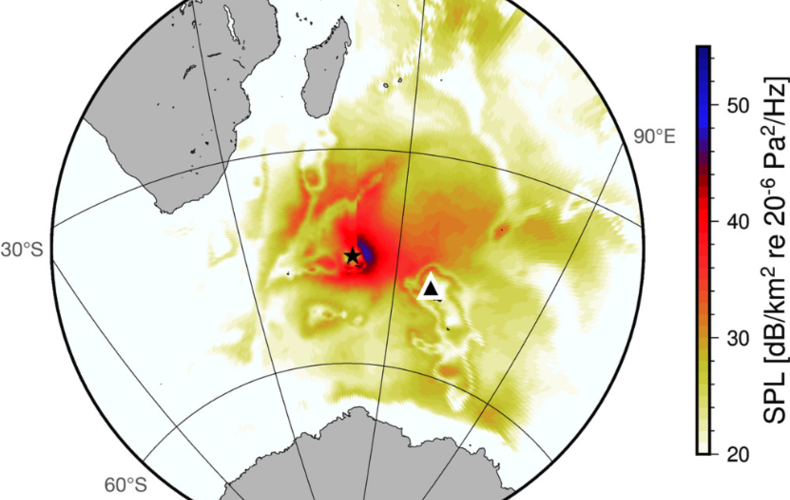
A method is introduced to reconstruct microbarom soundscapes in absolute values. The soundscapes are compared to remote infrasound recordings from infrasound array I23FR (Kerguelen Island) and in situ recordings by the INFRA-EAR, a biologger deployed near the Crozet Islands. The reconstruction method accounts for all-acoustic contributions, divided into evanescent microbaroms (detectable directly above the source) and propagating microbaroms (detectable over long ranges). It is computed by integrating acoustic intensities over the ocean surface, convolved with the transfer function quantifying the propagation losses and propagation time. The reconstructed soundscapes are found within 2.7 dB for of the measurements in the microbarom band of 0.1–0.3 Hz. Infrasonic soundscapes are essential for understanding the ambient infrasonic noise field and are a basic need for applications, such as atmospheric remote sensing, natural hazard monitoring, and verification of the Comprehensive Nuclear-Test-Ban Treaty.
OFC den Ouden, PSM Smets, JD Assink, LG Evers. A Bird’s-Eye View on Ambient Infrasonic Soundscapes
Journal: Geophysical Research Letters, Volume: 48, Year: 2021, doi: 10.1029/2021GL094555